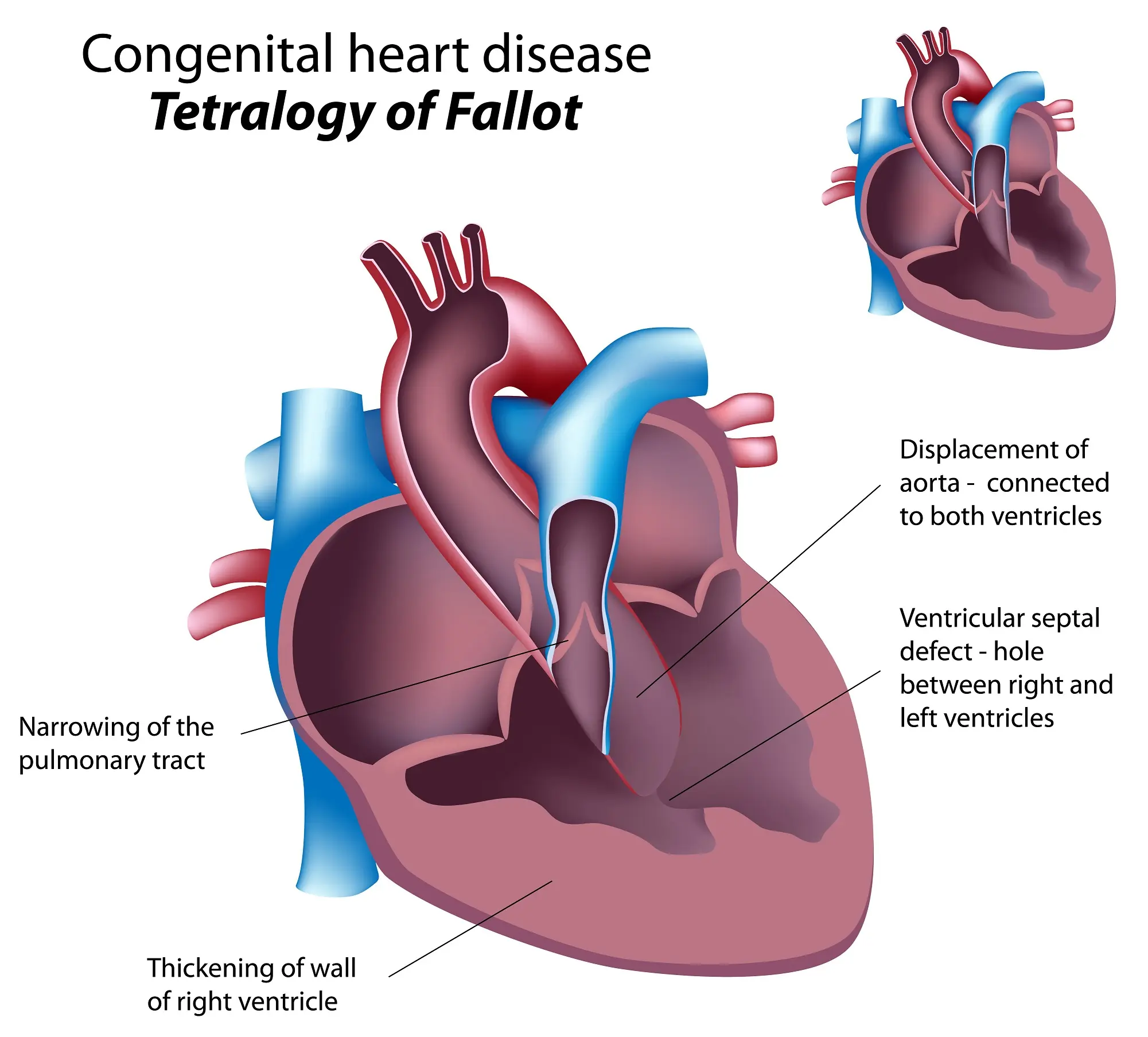Can Tetralogy of Fallot be Cured?
No
Surgical interventions aim to improve blood flow and correct abnormalities, but ongoing monitoring and management are usually required

What is Tetralogy of Fallot?
Tetralogy of Fallot is a congenital heart defect involving four abnormalities. Treatment may involve surgery to correct the defects. Regular monitoring is crucial for assessing heart function, managing symptoms, and providing ongoing care.

Clinical Aspects

Characteristics
Congenital heart defect involving four abnormalities: ventricular septal defect, pulmonary stenosis, right ventricular hypertrophy, and overriding aorta

Symptoms
Cyanosis (bluish tint to the skin), shortness of breath, difficulty feeding

Diagnosis
Clinical examination, imaging studies

Prognosis
Generally good with appropriate management and treatment

Complications
Heart failure, complications of untreated tetralogy of Fallot
Etiology and Treatment

Causes
Genetic factors, environmental factors during pregnancy

Treatments
Surgical repair, often done in stages; medications to manage symptoms

Prevention
Surgical repair, often done in stages; medications to manage symptoms
Public Health and Patient Perspectives

Epidemiology
Congenital heart defect affecting the heart’s structure

Patient Perspectives
Surgical correction is necessary for improved outcomes
Remember, the information provided here is intended for general knowledge purposes and may not apply to every individual case. To ensure you have accurate information relevant to your specific situation, always consult with a healthcare professional.
Share: